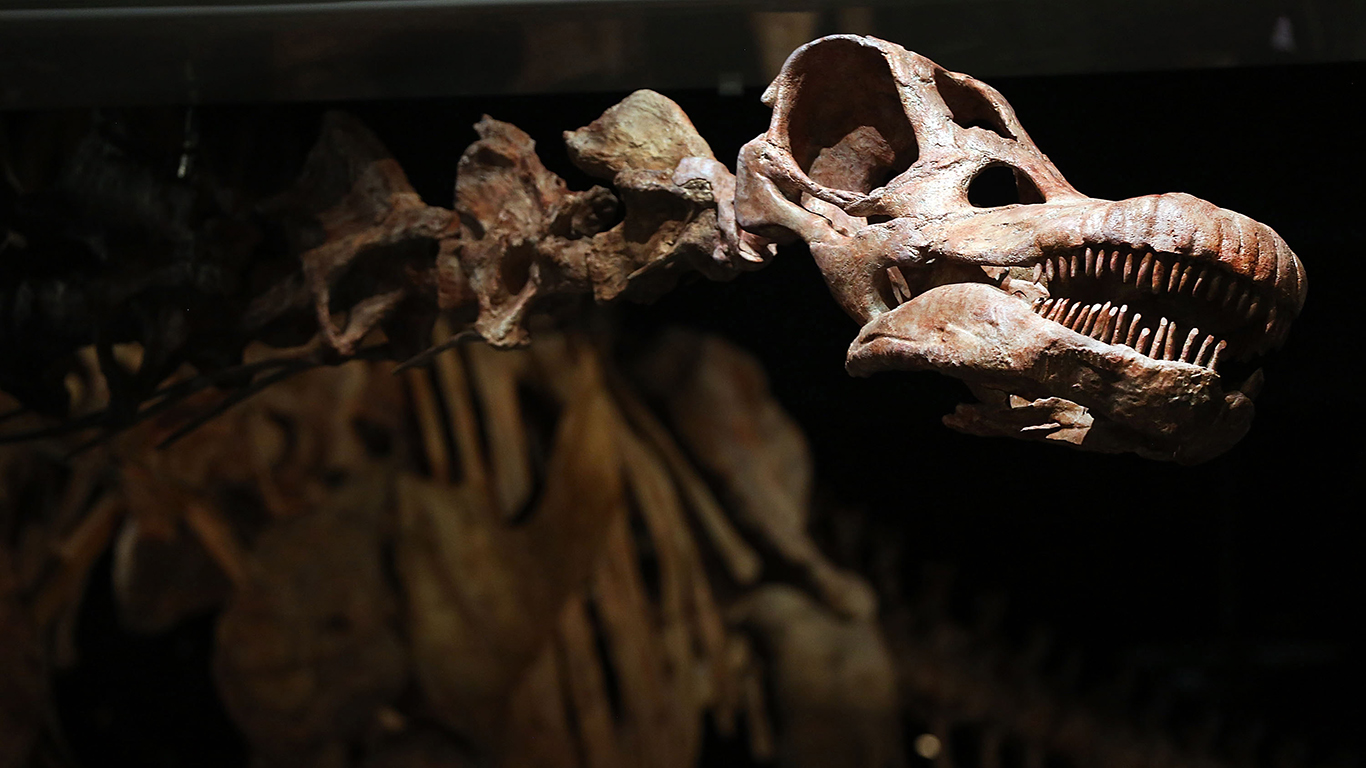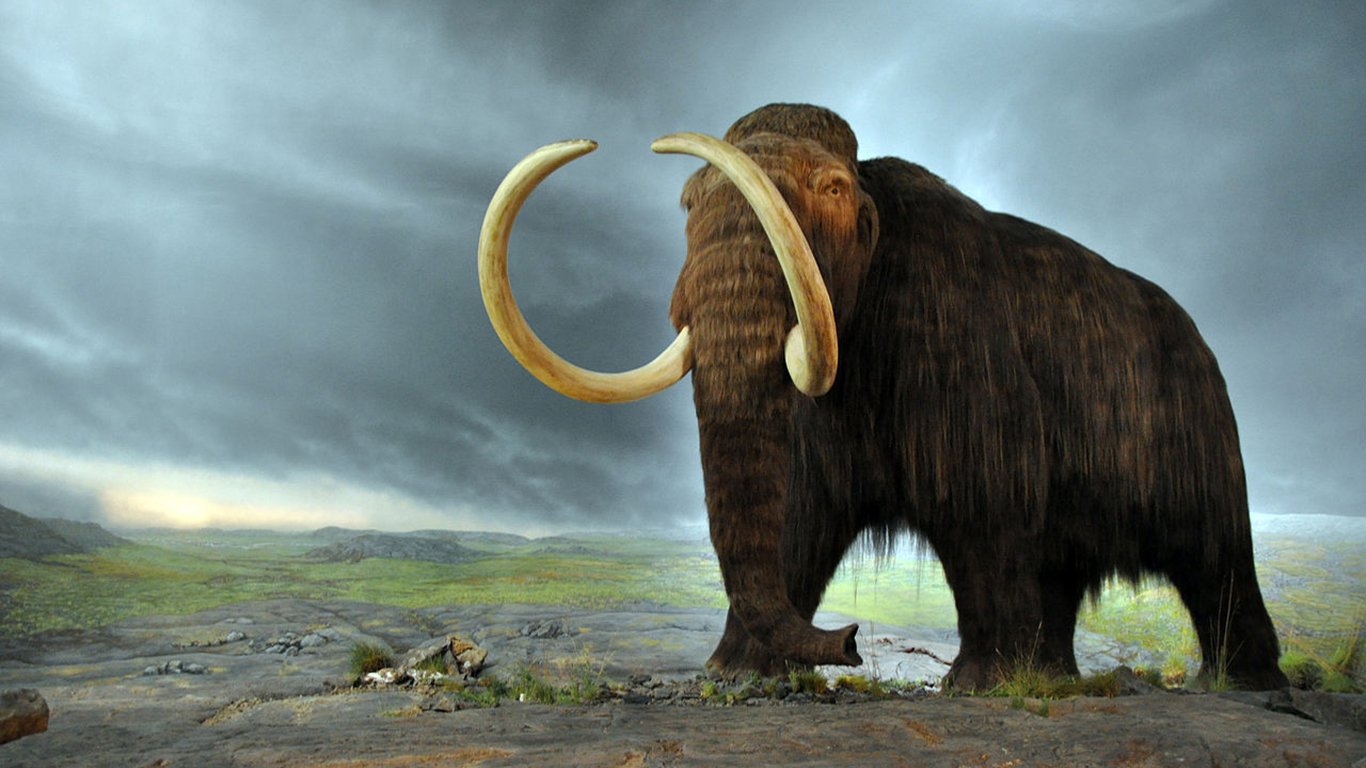So, what exactly makes a fossil famous? Is it thrust into the limelight for its scientific significance or for the miraculous way it was discovered? Or perhaps it’s the time at which the discovery was made. We would argue it’s a combination of all three.
24/7 Wall St. reviewed various scientific reports as well as discoveries reported by the American Museum of Natural History to determine the most famous fossils ever discovered. We included anything from the earliest traces of humans to dinosaurs and ancient reptiles fossils.
There are two fossils on our list that became famous quickly after their discovery. One such fossil, Lucy, is the most famous fossil of the 20th century.
Lucy was excavated in northern Ethiopia in November 1974, about seven years after the Beatles released their hit song, “Lucy in the Sky With Diamonds.” The paleontologists on site were listening to the song the same night they unearthed the most complete skeleton of the Australopithecus afarensis (one of the earliest known human species). Before the fossil even received its scientific name, it was named Lucy.
Another fossil to quickly gain attention upon discovery is the Hobbit. Otherwise known as Flo, from the scientific name Homo floresiensis, the fossil was found in 2003, the same year the movie “Lord of the Rings: The Return of the King” was released. The book series that turned into an epic movie trilogy likely propelled the fossil’s popularity — Flo’s small stature likely reminded the world of the hobbits’ small stature, and the fossil soared in popularity.
Click here to see the most famous fossils ever discovered.
Click here to read our detailed findings & methodology.
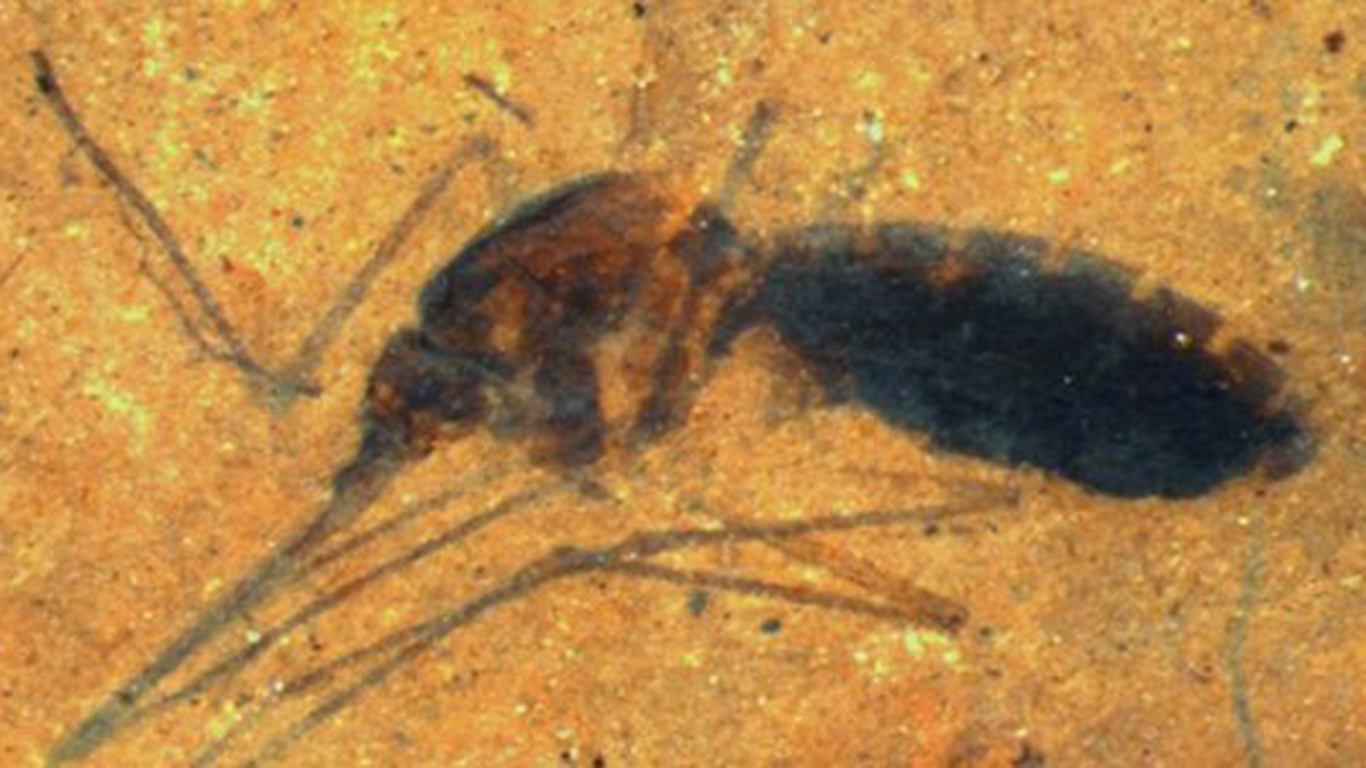
1. Blood engorged mosquito
> How old it is: 46 million years
> When it was unearthed: 2013
> Where it was excavated: Northwestern Montana
You never know what lies at the bottom of some ordinary pond. In this case, a prehistoric mosquito preserved in shale was discovered. The mosquito is estimated to be 46 million years old. It’s the substance hidden inside the mosquito’s body that’s considered of most value. With the help of a scanning electron microscope and mass spectrometry, a group of scientists were able to find molecules in the blood in the mosquito’s abdomen. This fossil can enable scientists to study whether complex molecules such as hemoglobin can survive for millions of years.
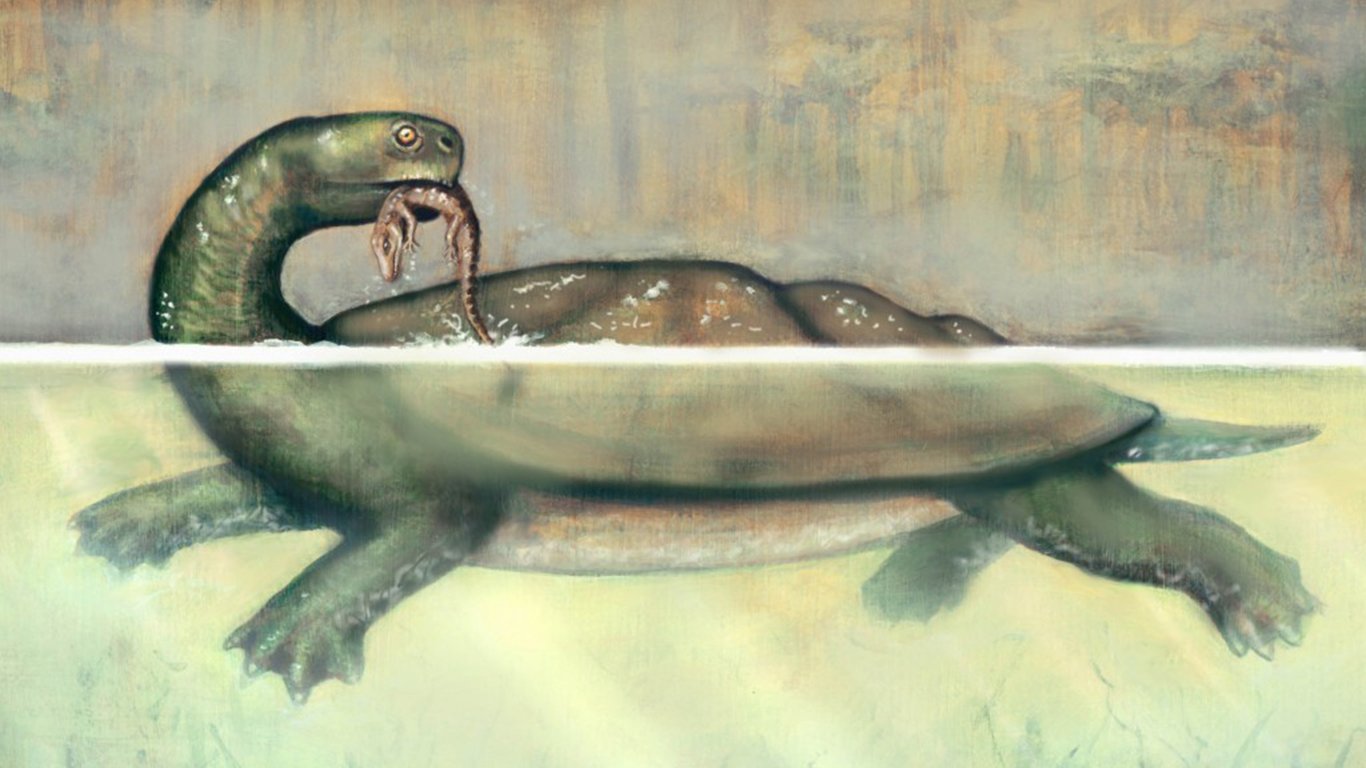
2. Carbonemys cofrinii (giant turtle)
> How old it is: 60 million years
> When it was unearthed: 2005
> Where it was excavated: Colombia
When you think of a turtle, even the giant kind, you likely don’t picture one the size of a prehistoric turtle, namely the Carbonemys cofrinii, or coal turtle. The skull of this 60-million-year old turtle is about 9.5 inches, about the size of an NFL football. Even more impressive is its shell, amounting to 5 feet 7 inches long. The coal turtle’s fossil reveals that it had powerful jaws that helped the omnivore eat anything from mollusks to crocodiles. The giant turtle was coined coal turtle because of where it was discovered: in a coal mine.
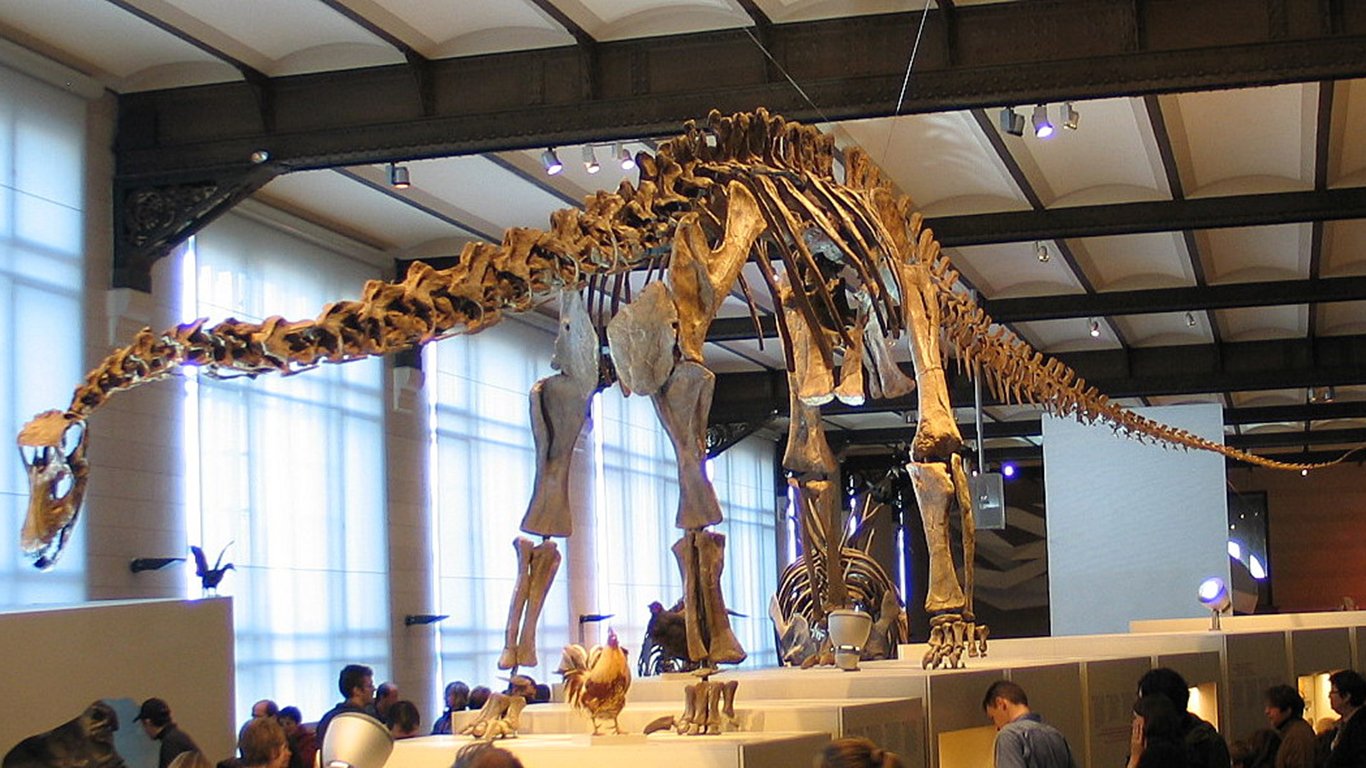
3. Diplodocus
> How old it is: 154-150 million years
> When it was unearthed: 1877
> Where it was excavated: Morrison, Colorado
One of the longest dinosaurs known to man is the Diplodocus. It’s one of the most well-known sauropods, a long-necked dinosaur that only eats plants. In 1877, fossils of the Diplodocus were found in what is now called Dinosaur Ridge in Morrison, Colorado. Andrew Carnegie helped popularize the dinosaur by donating casts of its fossil to museums all around the world.

4. Feathered dinosaur tail
> How old it is: 99 million years
> When it was unearthed: 2016
> Where it was excavated: Myitkyina, Myanmar
Paleontologist Lida Xing from Beijing discovered a fossil of a feathered dinosaur tail not during an excavation but at an amber market in Myitkyina, Myanmar. The seller had thought the tiny formation was part of a plant, but upon closer inspection it was identified as a feathered dinosaur tail about the size of a sparrow. One of Xing’s colleagues hypothesized that the small creature’s tail got stuck in the sticky tree resin that formed the amber and unable to get free it possibly died there. This discovery is incredibly important because the feathers on the tail can help paleontologists understand how feathers have evolved since prehistoric times.
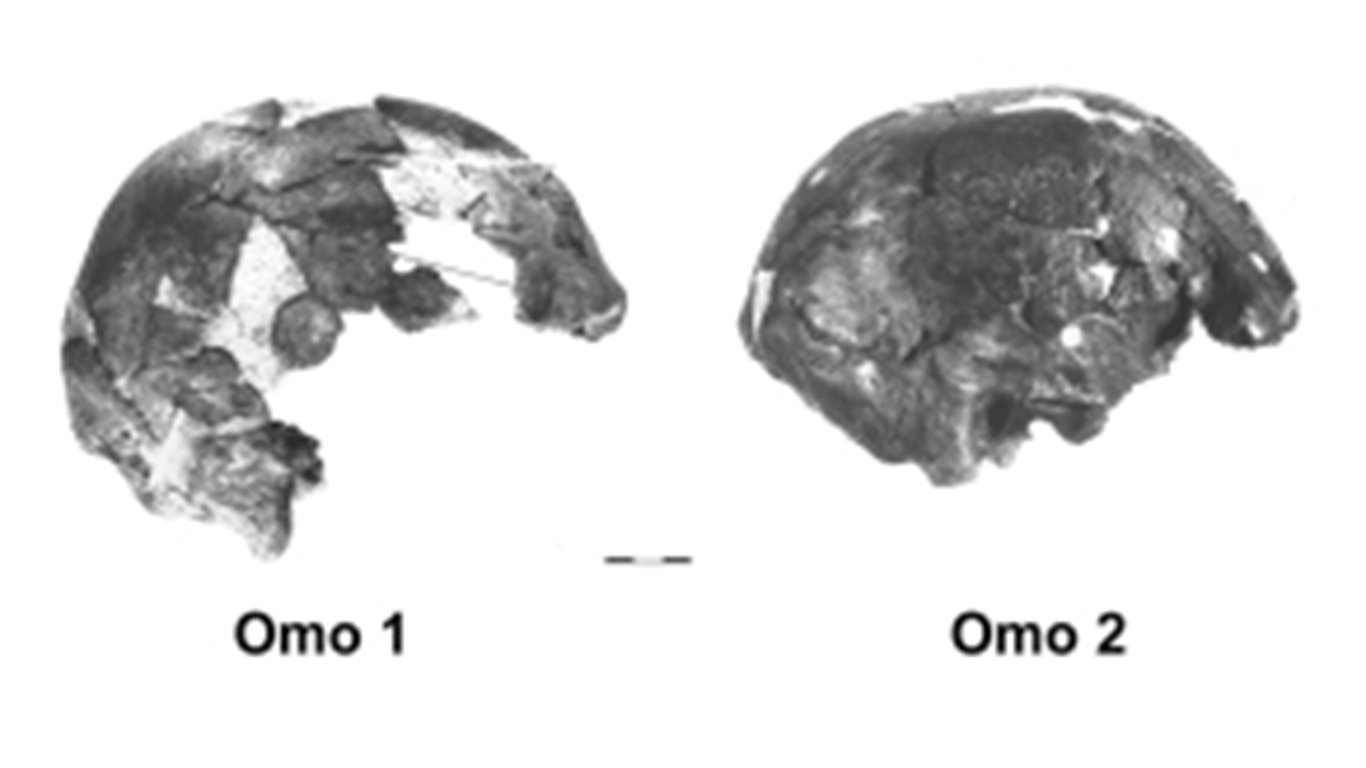
5. First modern human skulls
> How old it is: 195,000 years
> When it was unearthed: 1967
> Where it was excavated: Ethiopia
The oldest known fossils of modern humans were found in Ethiopia in 1967. The two partial skulls of Homo sapiens are called Omo I and Omo II. At the time of their excavation, the skulls were thought to be 130,000 years old. However, more modern dating techniques in 2005 dates revealed they are about 195,000 years old. This agrees with genetic analyses of the modern day population that suggest Homo sapiens first appeared around a fifth of a million years ago in Africa.
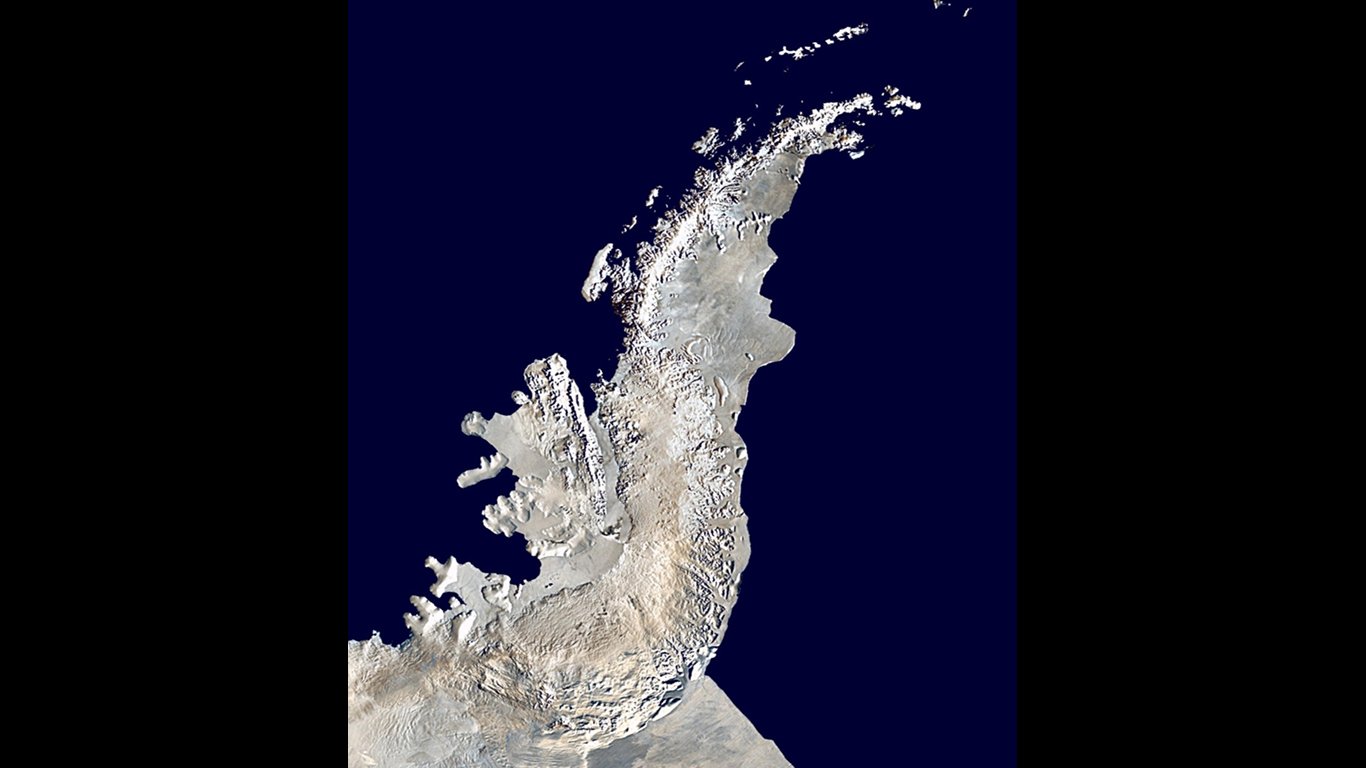
6. Fossilized spermatozoa
> How old it is: 50 million years
> When it was unearthed: 2015
> Where it was excavated: Seymour Island, Antarctica
In 2015, scientists discovered the world’s oldest fossilized sperm. The worm sex cell was was found in the wall of the worm’s cocoon in Seymour Island — one of several islands in the Antarctic Peninsula. Scientists were examining a fragment of the worm cocoon through a scanning electron microscope to get a better idea of the cocoon’s structure when they identified the clitellate or collared sperm. The sperm was preserved because that type of worm reproduces by releasing its sperm (and eggs) into cocoons.
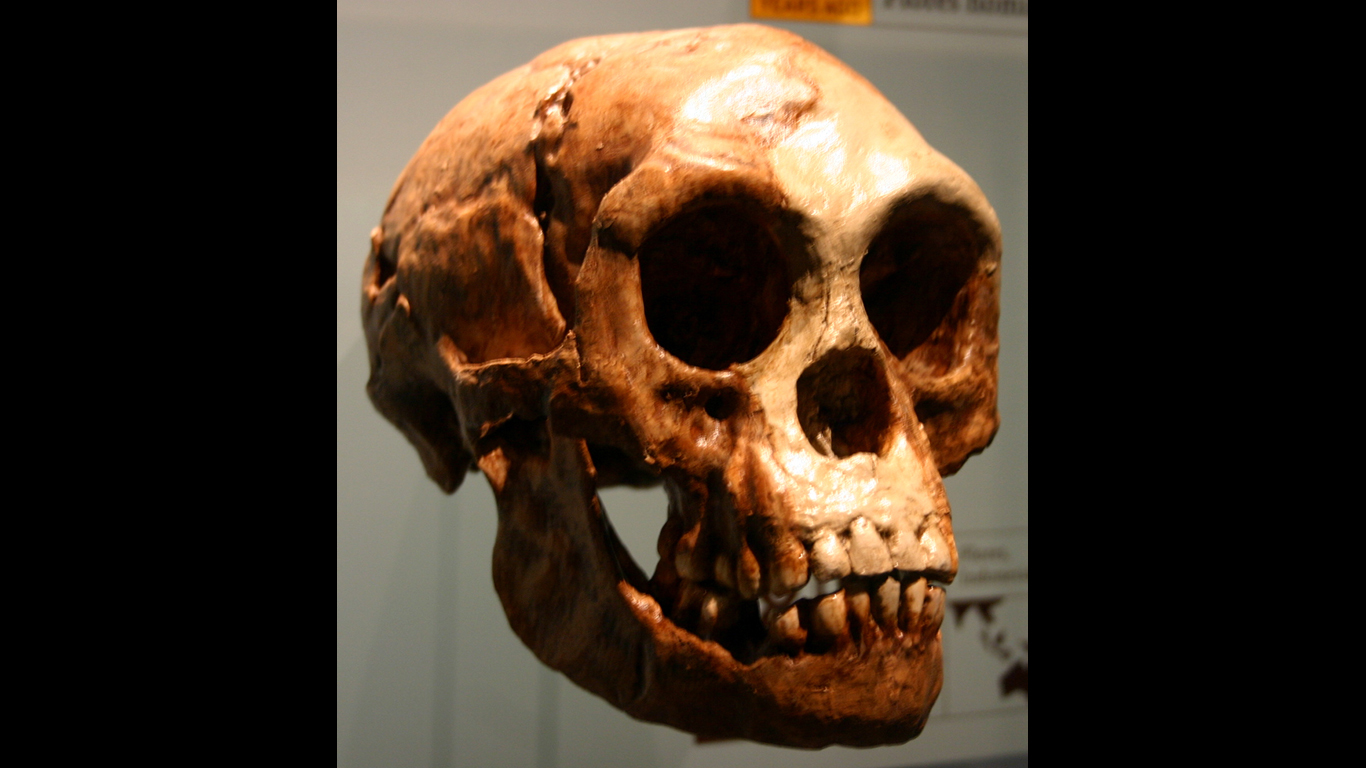
7. Hobbit discovery “Homo floresienis”
> How old it is: 12,000 years
> When it was unearthed: 2003
> Where it was excavated: Flores, Indonesia
The fantasy novel, “The Hobbit,” by J.R.R. Tolkien may have been published in 1937, but the Hobbit fossil wouldn’t be unearthed for another 66 years. The Hobbit, better known as Flo, was found in the Indonesian island of Flores. Flo, which is of the species Homo floresiensis, only stands 3 feet 3 inches tall. The species is thought to be 12,000 years old. The Hobbit fossil became widely popularized because of the “Lord of the Rings” craze of the time, just as researchers published the discovery of the species.
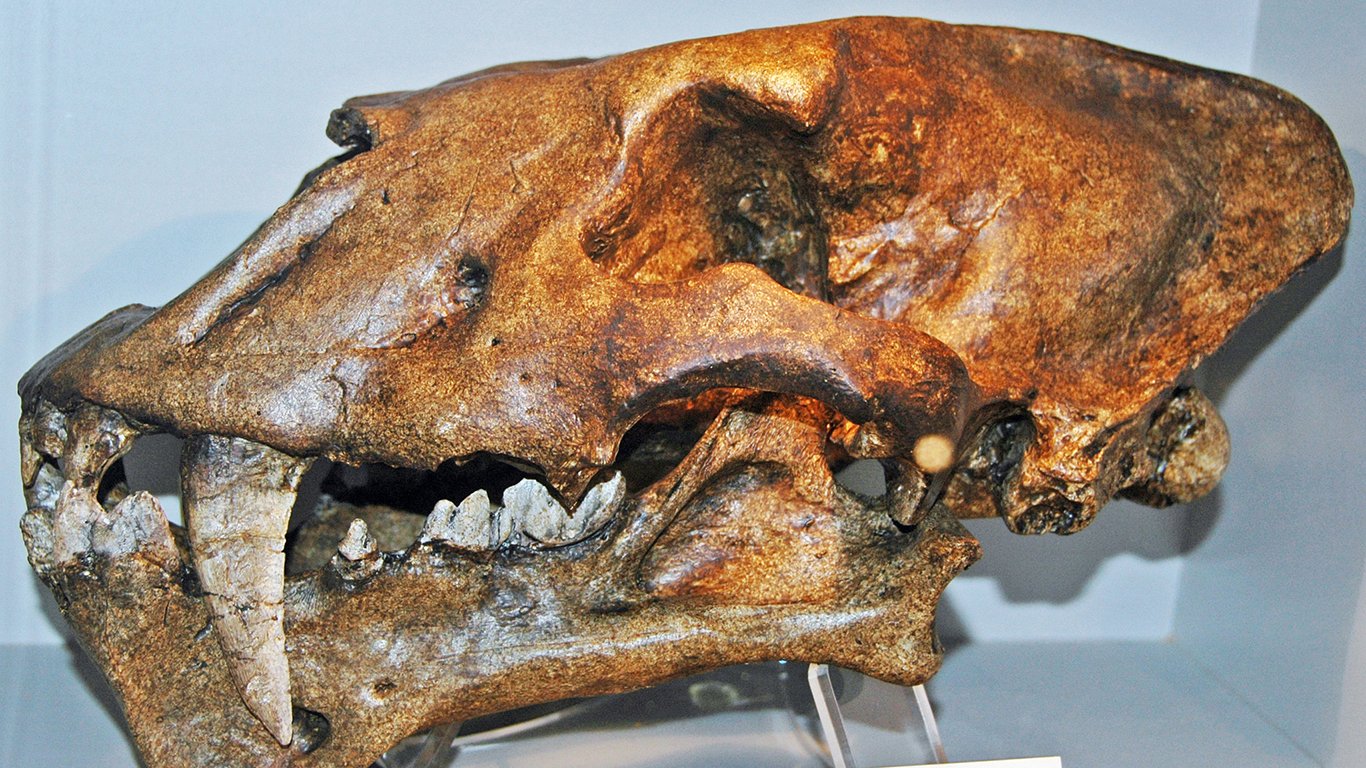
8. Homotherium (sabre-tooth cat)
> How old it is: 28,000 years
> When it was unearthed: Early 20th century
> Where it was excavated: Stránská Skála, Czech Republic
Have you ever heard of Stránská Skála? It’s a nature preserve in the Czech Republic that’s home to one of the most significant fossil sites in Europe. One of the many fossils discovered in this area is the 28,000-year-old mandible of the homotherium, the sabre-tooth cat. This finding is significant because previously it was believed that the species went extinct much earlier, 300,000 years ago.
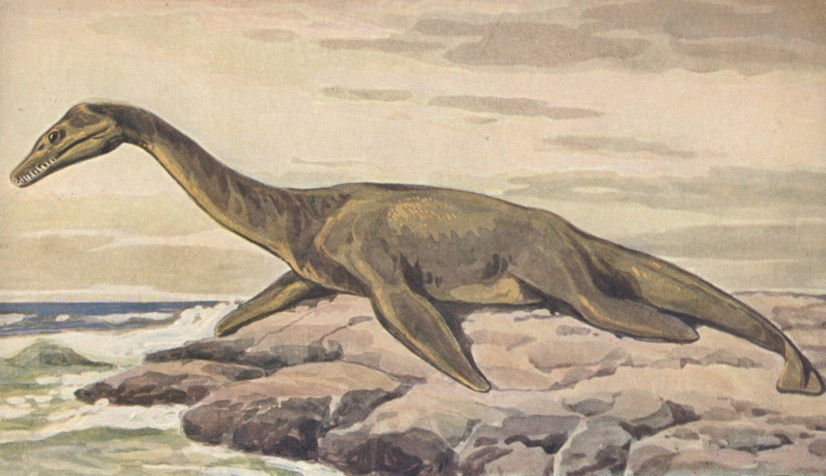
9. Intact plesiosaur skeleton
> How old it is: 112 million years
> When it was unearthed: 1994
> Where it was excavated: North America
One of the most complete fossils of a plesiosaur was accidentally excavated near Fort McMurray, Canada, in 1994. The 112 million-year-old complete fossil is that of the Nichollsia borealis, a carnivorous aquatic reptile that could reach body lengths of over 40 feet. This one is 8.5 feet long. While not considered a dinosaur, plesiosaurs inhabited the seas at the same time that dinosaurs trekked the land. The fossil, which had been preserved in sandstone, was found by two machine operators at Syncrude Base Mine.
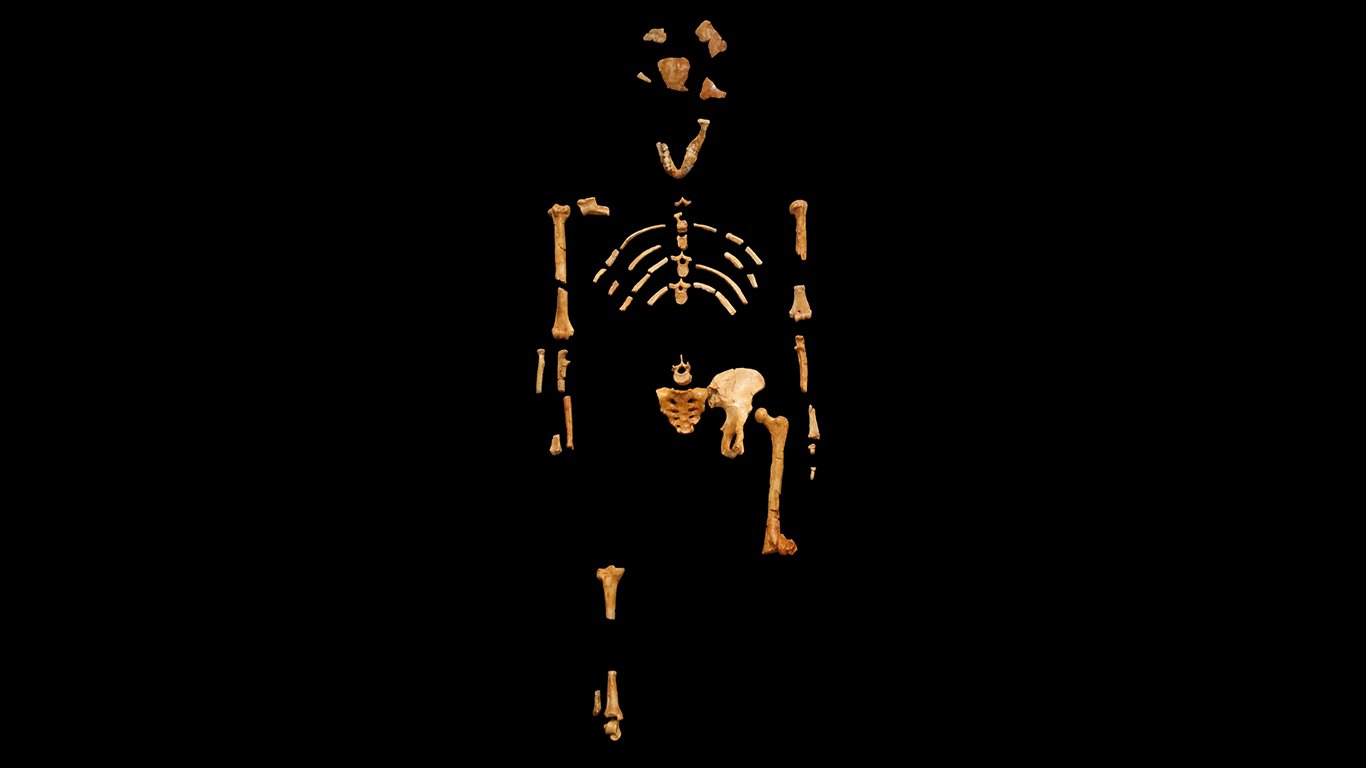
10. Lucy
> How old it is: 3.2 million years
> When it was unearthed: 1974
> Where it was excavated: Afar, Ethiopia
Perhaps the most famous fossil of all time, Lucy is a 3.2 million-year-old Australopithecus afarensis, one of the earliest human species. Lucy, the most complete skeleton of an erect-walking human ancestor, was named after the Beatles song, “Lucy in the Sky with Diamonds.” She was unearthed in the Afar region of Ethiopia over 40 years ago. Lucy enabled scientists to nix the idea that walking was the result of a bigger brain, because her brain was very small, yet she walked upright. Lucy enhanced the world’s understanding of human evolution.

11. Maiasaura
> How old it is: 100-65.5 million years
> When it was unearthed: 1978
> Where it was excavated: Choteau, Montana
If the name Maiasaura doesn’t ring any bells, maybe, “good mother lizard” will? Paleontologist Jack Horner, one of the advisers for the “Jurassic Park” films, excavated fossilized eggs of the Maiasaura dinosaur in Montana in 1978. The duck-billed dinosaur had an extensive nesting ground in the Two Medicine Formation close to Choteau, Montana. Horner’s discovery of the hadrosaur enabled paleontologists to understand how it interacted with its family. One interesting discovery was that adult Maiasaura didn’t abandon their newborns right upon hatching.
12. Mammoth from Michigan
> How old it is: 15,000-11,700 years
> When it was unearthed: 2015
> Where it was excavated: Michigan
Soybean farmer, James Bristle, from Michigan hit the jackpot three years ago when he found the bones of a mammoth. Attempting to install a drainage pipe in his field, Bristle’s tool struck a fragment of a mammoth’s pelvis. This isn’t Michigan’s first mammoth. As of 2015, nearly 30 have been unearthed in Michigan alone. Two years later, researchers have found more than 40 additional bones to complete the woolly Columbian mammoth hybrid, including the skull, tusks, and teeth. Some of the mammoth’s remains were found in pond sediment. Researchers speculate that ancient humans likely butchered the beast and stored part of it at the bottom of the pond for later retrieval. This prompted researchers to study the fungal spores and pollen grains within the sediment to get a better understanding of when the species roamed the earth as well as when they became extinct.
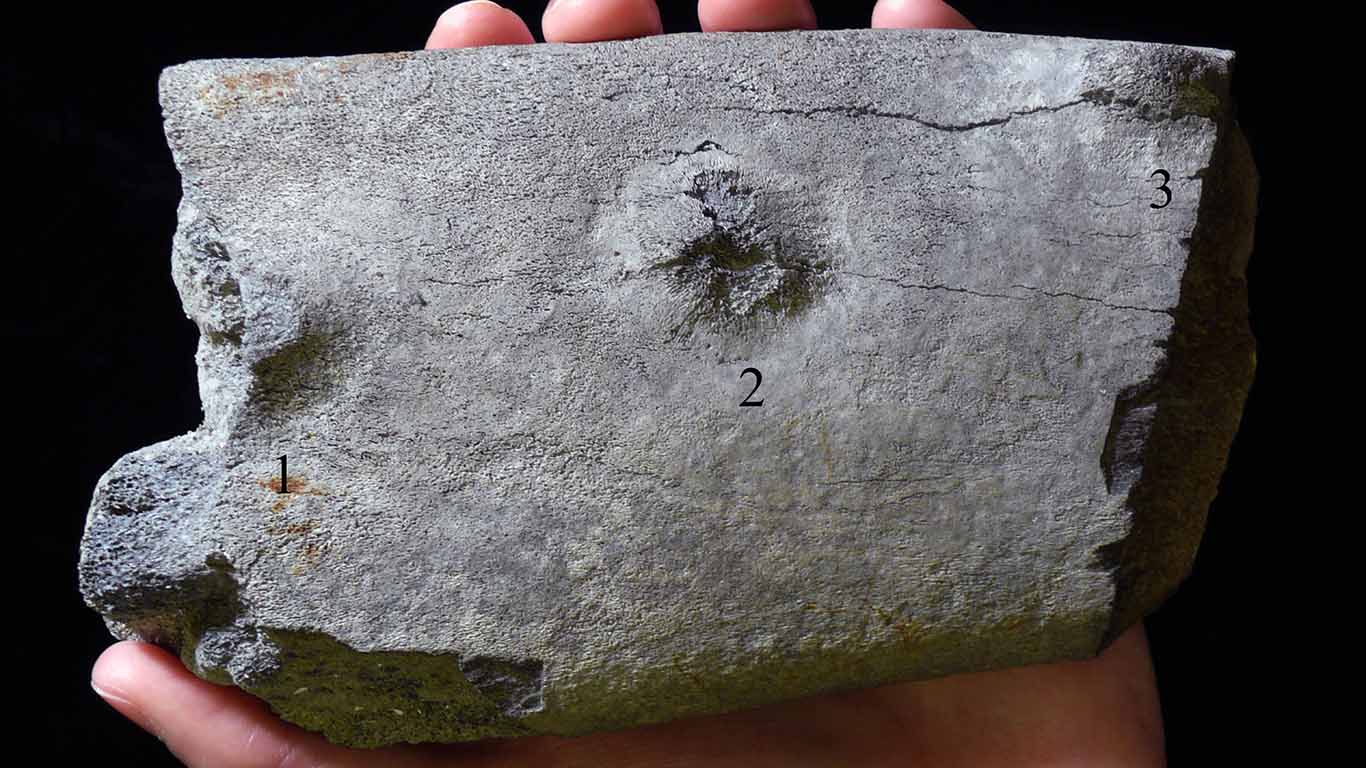
13. Megalodon
> How old it is: 4-3 million years
> When it was unearthed: 2011
> Where it was excavated: North Carolina
In 2011, a piece of a rib from a prehistoric whale was found in a North Carolina strip mine. This wasn’t just any typical fossil, however. This fossilized whale rib had three tooth marks on it, indicative of a shark attack. The spacing between the marks, 2.5 inches, enabled scientists to determine that the beast that attacked the whale was a mega-toothed shark called, Carcharocles megalodon. North Carolina appears to be the former hotspot of the extinct shark. Just this past August, a couple strolling on Wrightsville Beach stumbled upon a 4-inch-long megalodon tooth. The megalodon is the largest known extinct shark.
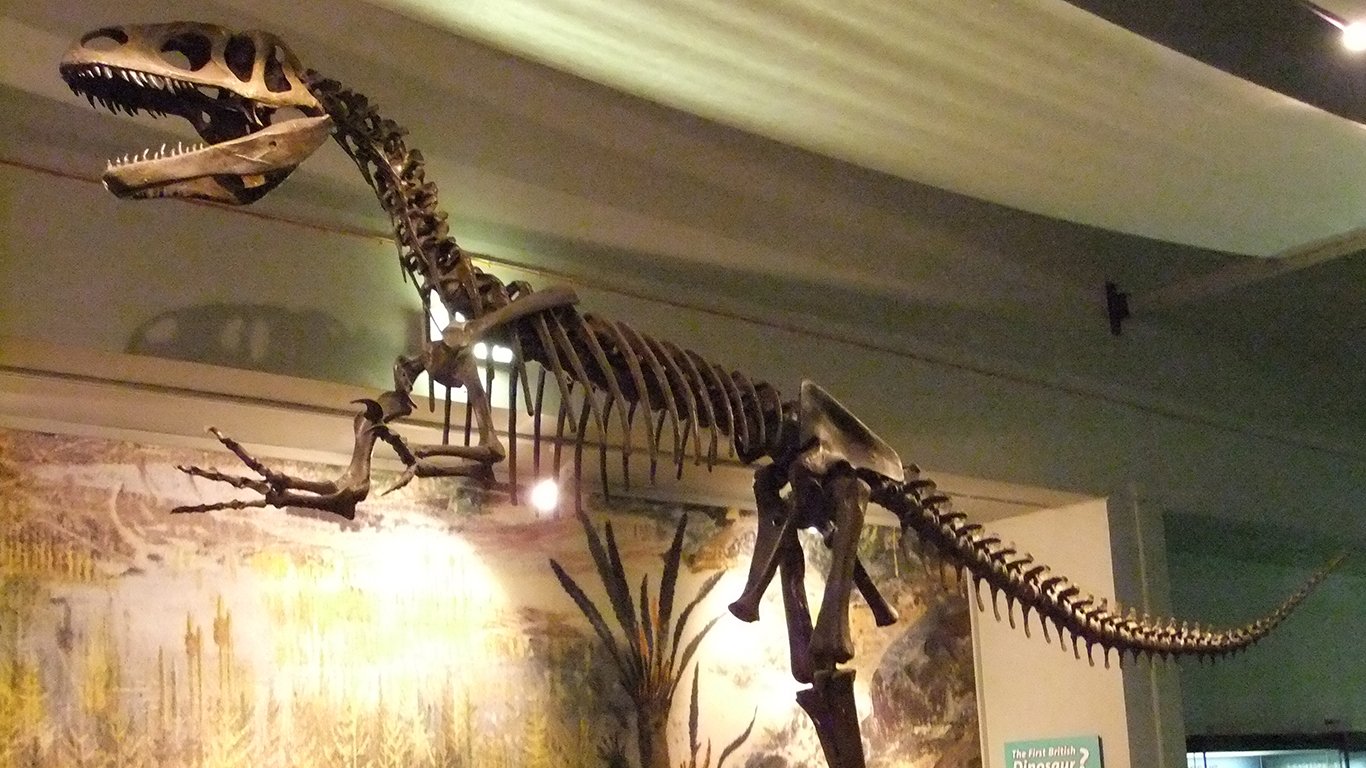
14. Megalosaurus
> How old it is: 165 million years
> When it was unearthed: 1676
> Where it was excavated: England
Even though remnants of the Megalosaurus were first discovered in the late 17th century, the fossil wasn’t identified as a Megalosaurus until 150 years later. A partial femur from the prehistoric creature was excavated in England in 1676 and an Oxford University professor thought it belonged to a giant human. In 1824, British naturalist William Buckland, gave the species its official name, meaning great lizard. Richard Owen is the renowned anatomist who identified the Megalosaurus as a dinosaur in 1842. The Crystal Palace exhibition in London in 1854 included a replica of the dinosaur, one of the first dinosaurs to ever be displayed to the public.
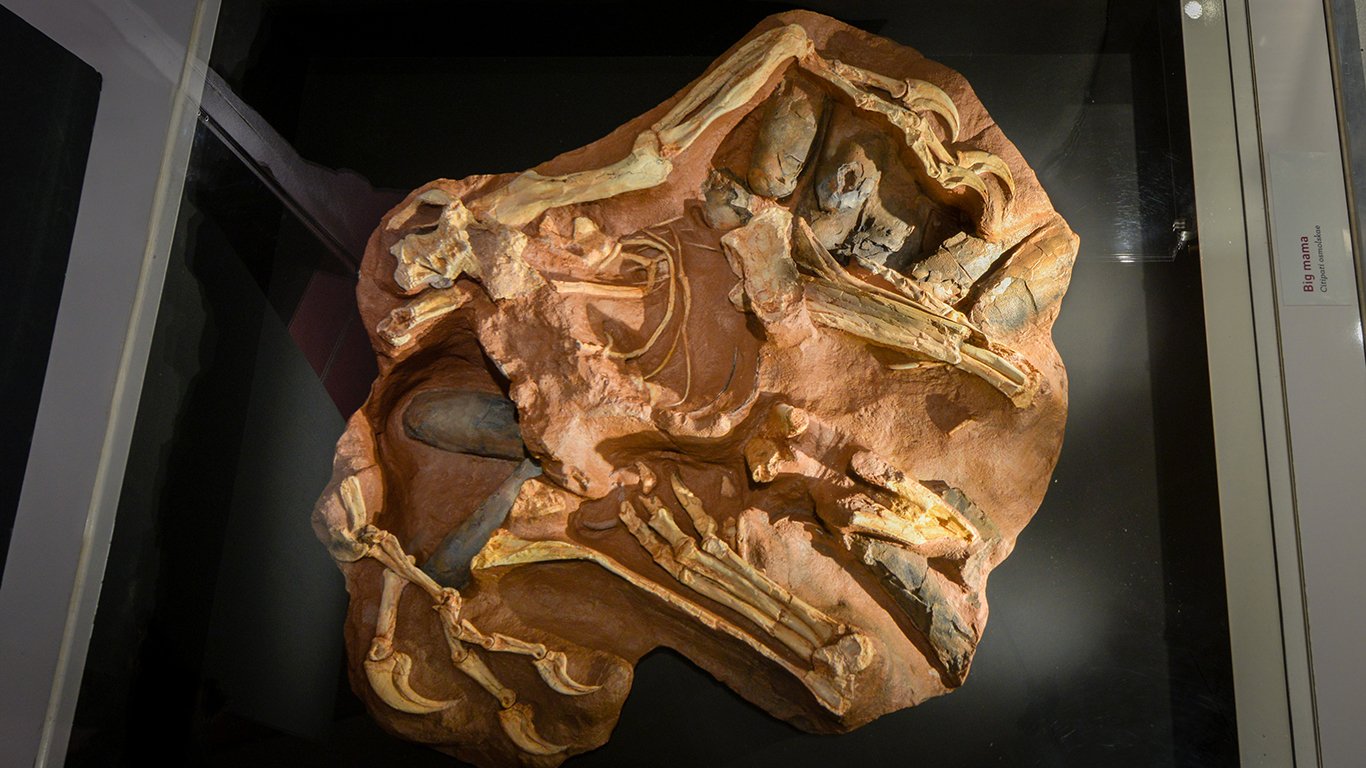
15. Momma dinosaur brooding her eggs
> How old it is: 83-66 million years
> When it was unearthed: 1993
> Where it was excavated: Gobi Desert, Mongolia
Perhaps one of the most touching fossils found to date is that of a mother oviraptor brooding her eggs — but there’s more to the story. At first, the mother was mistaken for a thief, hence the species name, which means “egg thief.” The first oviraptor fossil was found in Mongolia in 1922 beside that a nest full of eggs from a Protoceratops, a small-horned dinosaur. It wasn’t until 1993, when Mark Norell from the American Museum of Natural History discovered a fossilized embryo in an identical egg, that it was revealed the eggs had indeed belonged to the oviraptor. Paleontologists confirmed this theory further with the discovery of the oviraptor’s skeleton, which was preserved in the nest with her arms spread over the eggs.
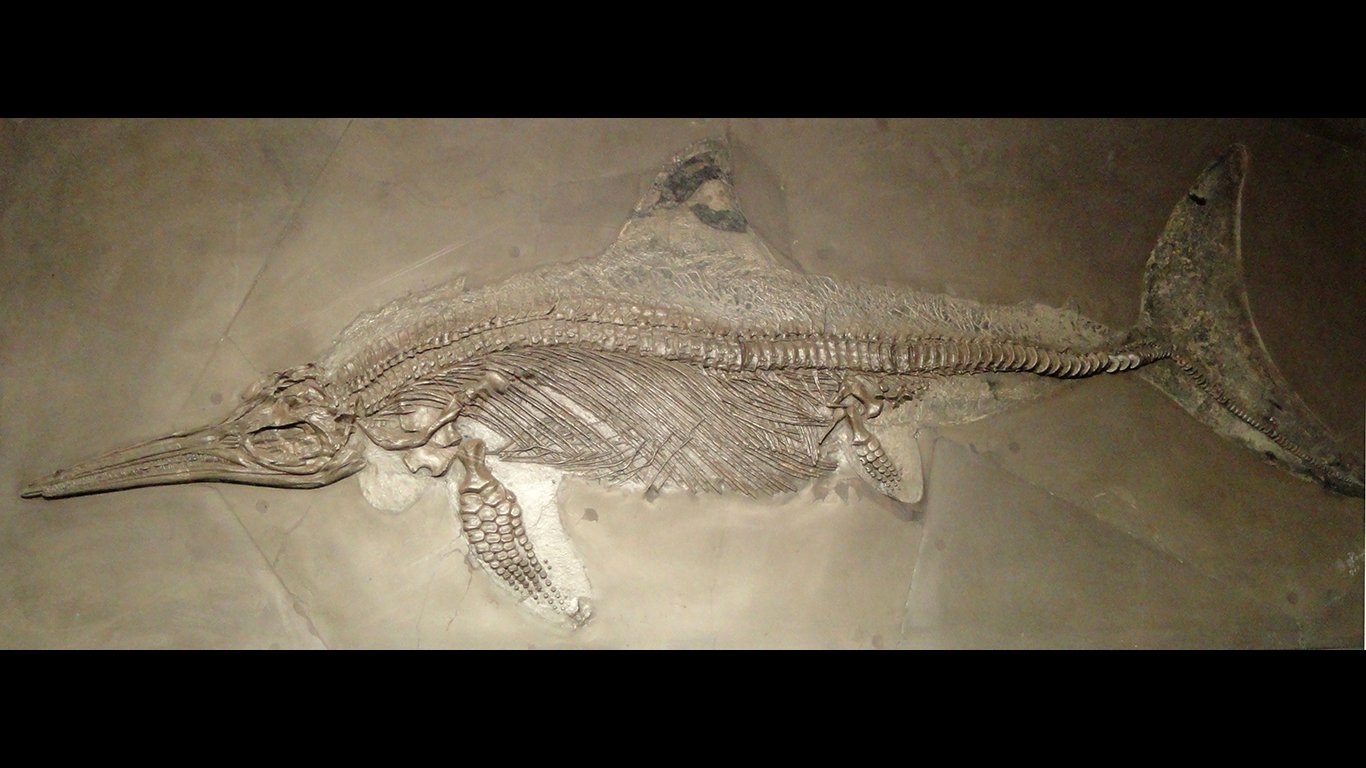
16. Mother dinosaur giving birth
> How old it is: 248 million years
> When it was unearthed: 2011
> Where it was excavated: South Majiashan, China
Roughly 248 million years ago, large marine reptiles called ichthyosaurs lived in the seas. Fast forward to 2011 in South Majiashan, China. That’s when a team of researchers found the fossil of an ancient ichthyosaur mother who had been carrying at minimum three offspring. One baby ichthyosaurs was found beneath her body, another half-way out of the birth canal, and the third still inside her.
Initially, this fossil stumped scientists because reptiles have always been known to lay eggs yet this prehistoric marine reptile gave live birth. Moreover, the offspring was coming out head first, as in animals that give birth on land. Scientists postulated that since the ichthyosaurs evolved first on land, it retained the live birthing when it became a marine animal. In general, scientists found that reptiles went back and forth between the two birth methods before settling on egg laying.
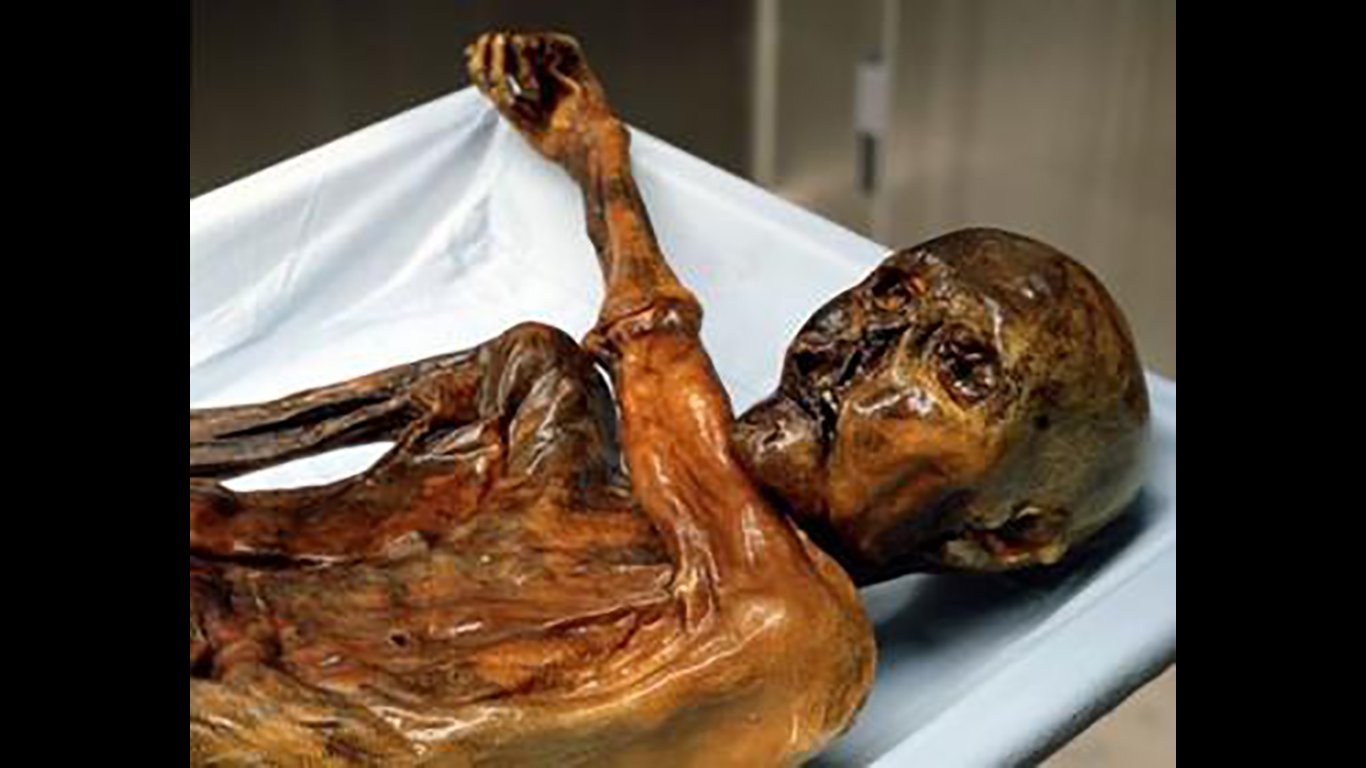
17. Otzi the Iceman
> How old it is: 5,300 years
> When it was unearthed: 1991
> Where it was excavated: European Glacier
It’s likely that you’ve heard of Otzi the Iceman, otherwise known as Europe’s oldest celebrity. The Iceman was fully clothed in a fur jacket and leather shoes when he was recovered in the Ötztal Alps near the Italian-Austrian border. Two German tourists discovered the corpse trapped in ice in 1991. After carbon-dating tests, the Iceman was found to be over 5,000-years-old — the most well-preserved body ever unearthed from that time period (3350 and 3100 BC).
A series of coincidences helped preserve the Iceman for all of these years. His body tissue maintained some of its elasticity due to the moisture from the snow, which later turned into ice. Also, his body was placed out of range from where the glacier flowed. Finally, he was found shortly after the ice surrounding his head, back, and shoulders had thawed, so he wasn’t exposed to the sun and wind for long.
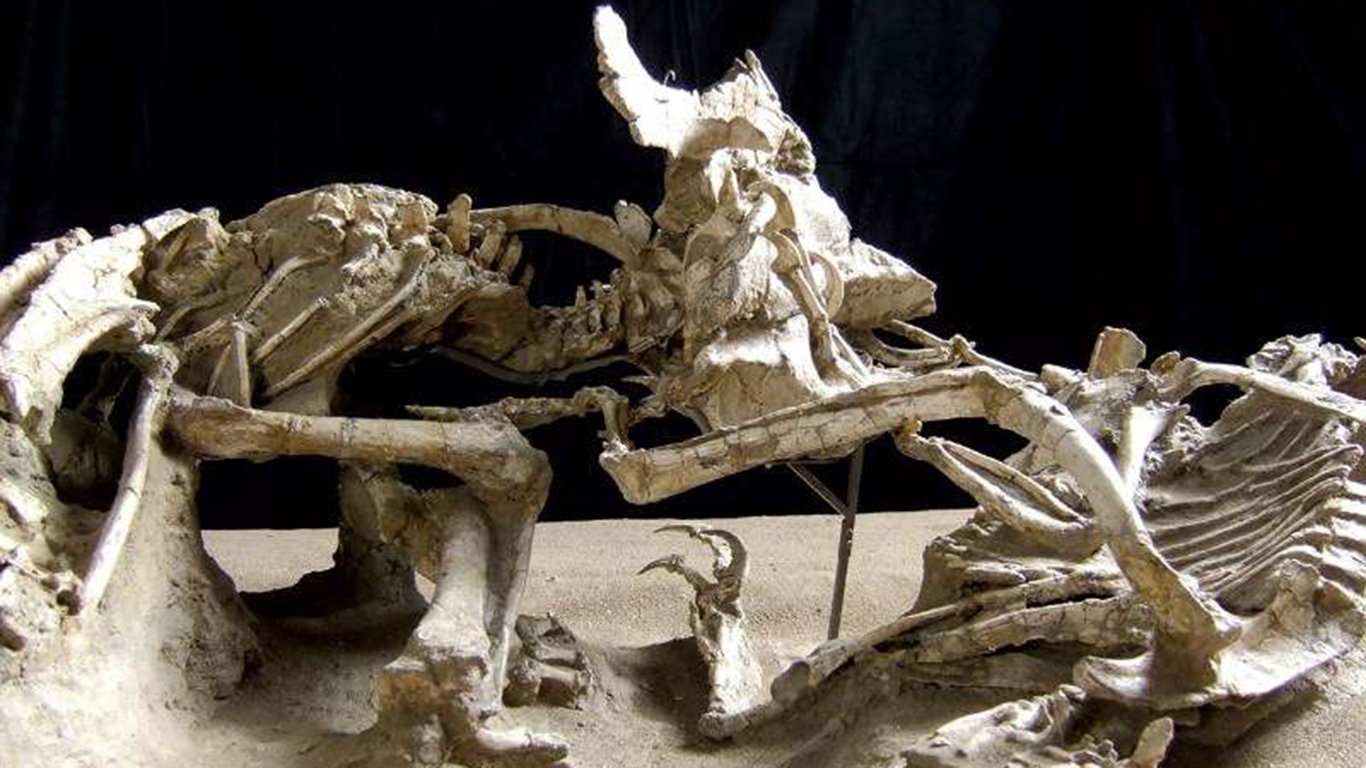
18. Protoceratops and Velociraptor “The Fight Dinosaurs”
> How old it is: 80 million years
> When it was unearthed: 1971
> Where it was excavated: Gobi Desert, Mongolia
In the case of The Fighting Dinosaurs fossil, two dinosaurs were visibly locked in combat. The battle was between the carnivorous velociraptor and the herbivorous protoceratops. The velociraptor planted its sharp claw into a major blood vessel in the neck of the protoceratops. As a defense mechanism, the Protoceratops bit and effectively broke the right arm of its predator. An abrupt sand flow likely buried the creatures, freezing them in this position for 80 million years. It’s one of the only fossils that captures active predation.
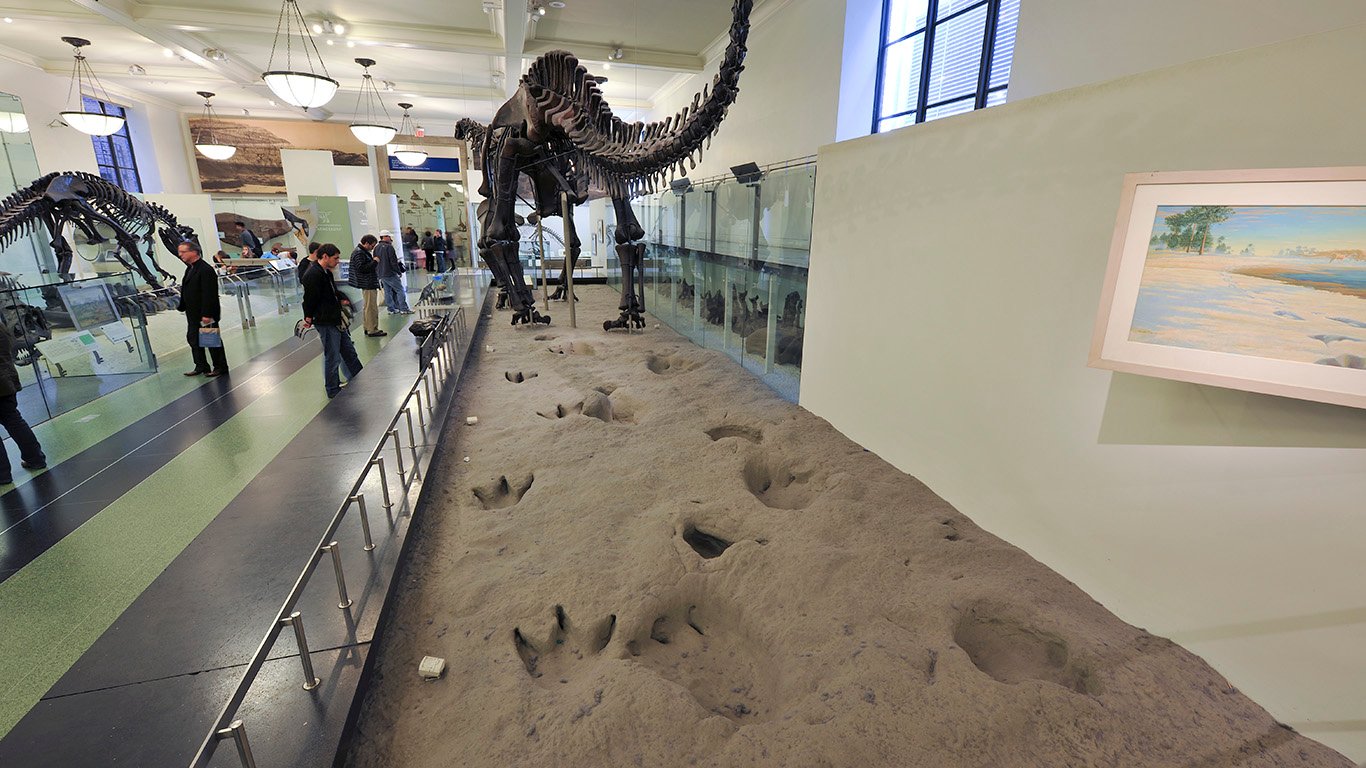
19. Sauropod flees for its life
> How old it is: 113-107 million years
> When it was unearthed: 1938
> Where it was excavated: Glen Rose, Texas
This fossil is undoubtedly different from most. Otherwise known as The Glen Rose Trackway, this fossil captures the trail of what scientists believe to be a type of theropod, the same category a Tyrannosaurus rex falls under, following a giant sauropod. The tracks were discovered at the bottom of the Paluxy River in Glen Rose, Texas. It’s unclear if the theropod attacked the sauropod. What researchers do know is that both creatures turned right abruptly and that there was a drag mark by the sauropod’s right foot and that the final left footprint of the theropod is missing.
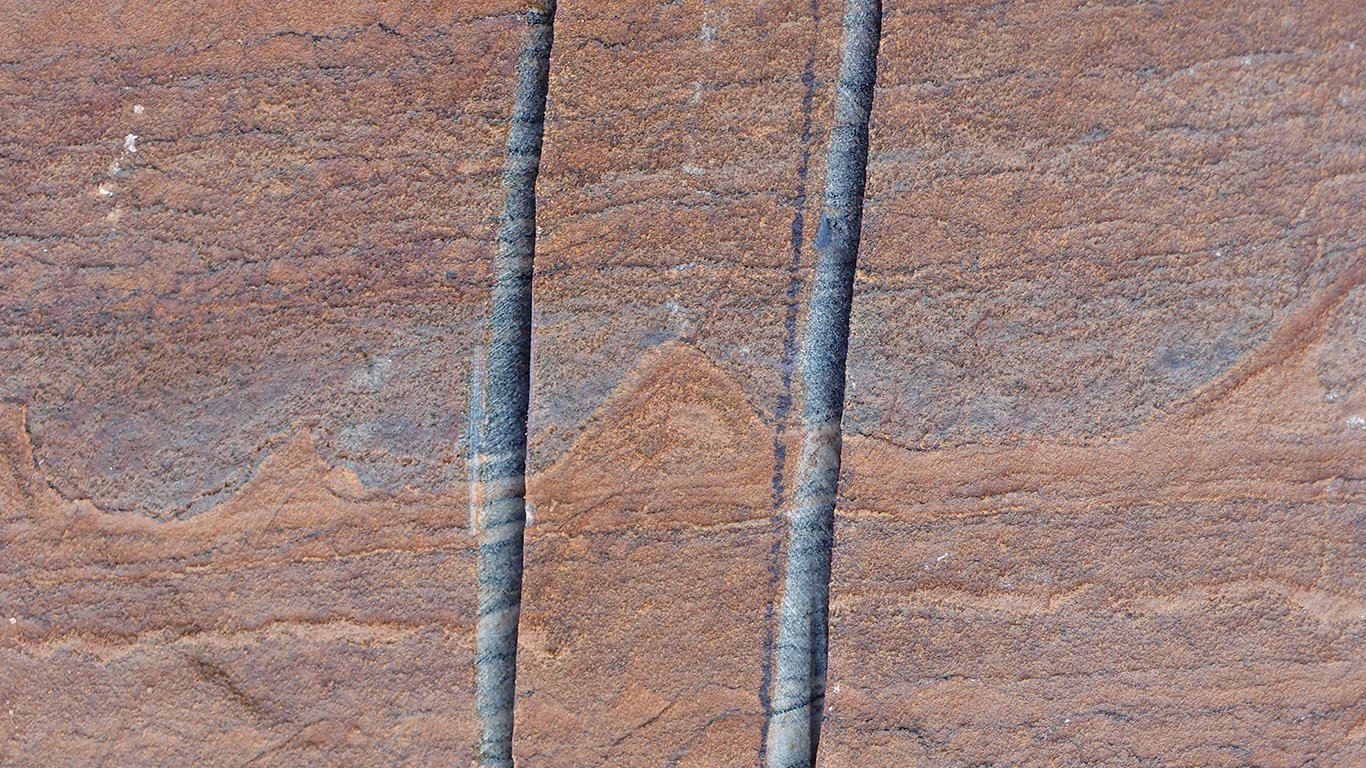
20. Stromatolites
> How old it is: 3.7 billion years
> When it was unearthed: 2012
> Where it was excavated: Isua, Greenland
The oldest fossils to date have been unearthed in Greenland. The most recent one shattered the oldest fossil record of 3.48 billion years to 3.7 billion years. Prof. Allen Nutman of the University of Wollongong had been studying the ancient rock formations in Greenland’s Isua Supracrustal Belt for over three decades. Nutman and his colleagues in 2016 claimed they had discovered the remnants of the ancient bacteria stromatolites in 3.7 billion-year-old rocks. However, just this month NASA astrobiologist Abigail Allwood challenged the discovery. Allwood believes the cone-shaped structures in the rocks thought to be the ancient bacteria are actually elongated structures that form via natural movement in tectonic plates.
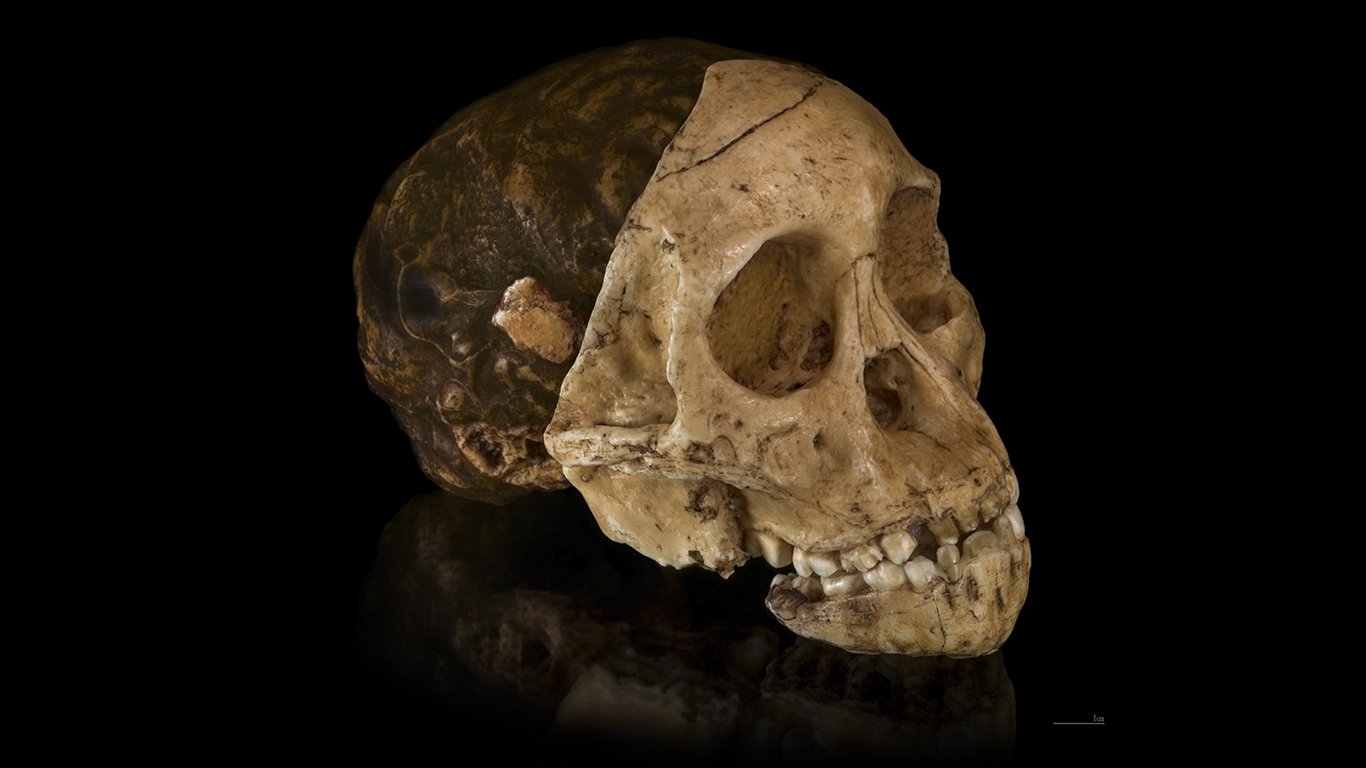
21. Taung child
> How old it is: 2.8 million years
> When it was unearthed: 1924
> Where it was excavated: Taung, Republic of South Africa
In 1924, Raymond Dart discovered one of the earliest human fossils in Africa. Dart unearthed the skull of what is believed to be a 3-year-old child. The discovery of the Taung child was the first time researchers saw evidence of an early upright human. The evidence that it was a two-legged human was in the spinal cord hole position. This discovery was also the first evidence that humans evolved in Africa as opposed to Europe. Researchers hypothesize that the child was killed by an eagle because of the puncture marks at the bottom of the skull’s eye sockets.
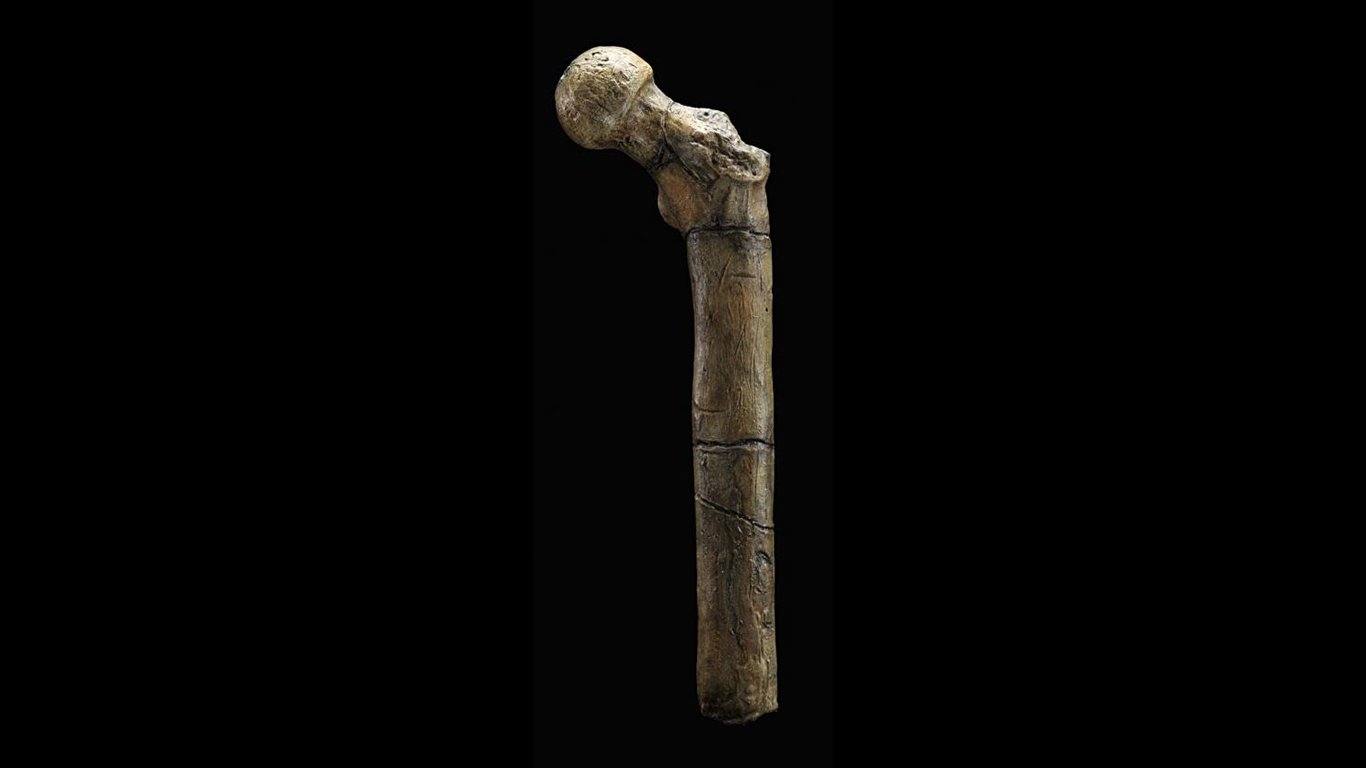
22. Thigh bone
> How old it is: 6 million years
> When it was unearthed: 2001
> Where it was excavated:Tugen Hills region, Kenya
A handful of fossils were uncovered in central Kenya in 2001, among them a 6 million-year-old thigh bone. Researchers found evidence the bone was of a two-legged, walking erect. The bone belonged to the Orrorin tugenensis, one of the oldest early humans. The species is estimated to have been the size of a chimpanzee. This discovery was important for further understanding of human evolutionary process.
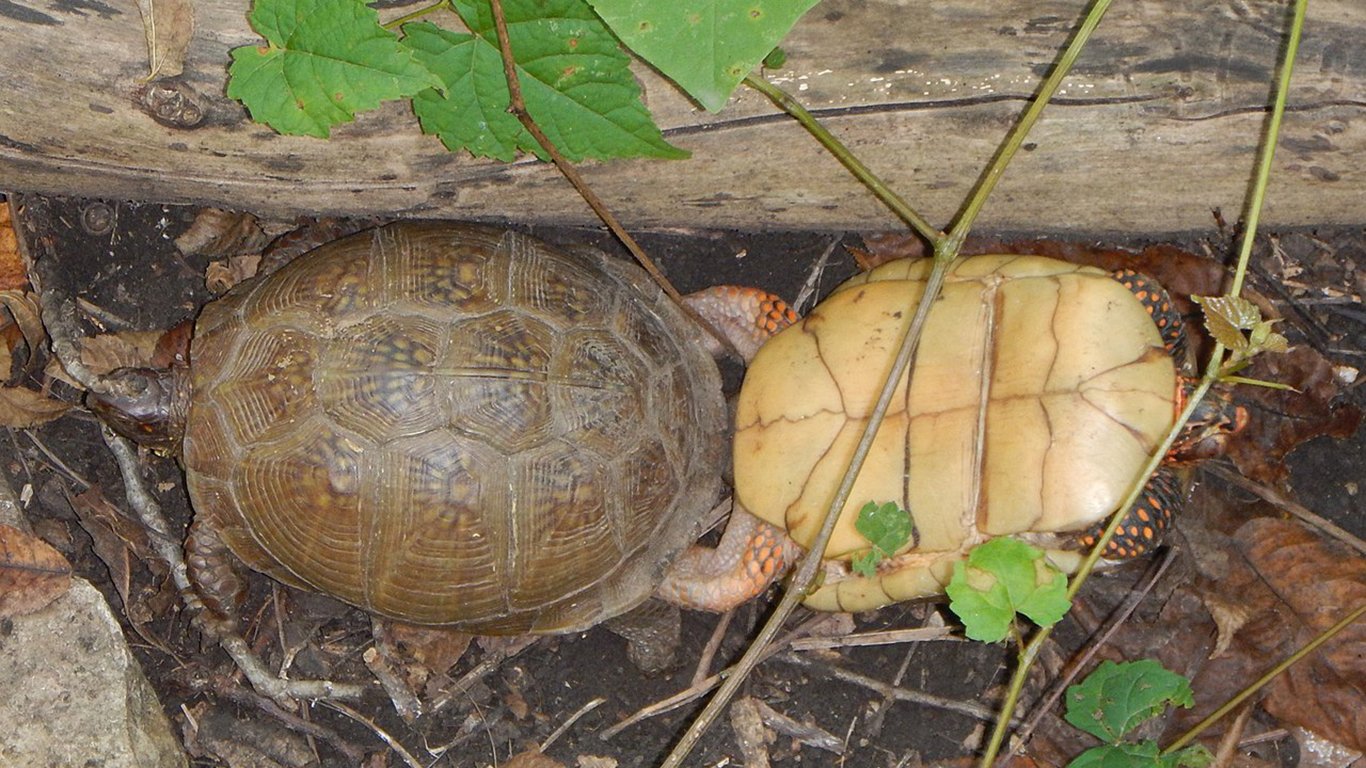
23. Turtles mating
> How old it is: 47 million years
> When it was unearthed: 1987
> Where it was excavated: Messel Fossil Pit, Germany
Yes, a fossil of two reptiles in the midst of procreating does in fact exist. Researchers hypothesize that as the two turtles were mating, they were also sinking into the depths of a volcanic lake in now Messel, Germany. They eventually reached toxic waters and died at the same time. While around 30 fossils of insects mating have been found, this is the first mating fossil by ancient vertebrates.
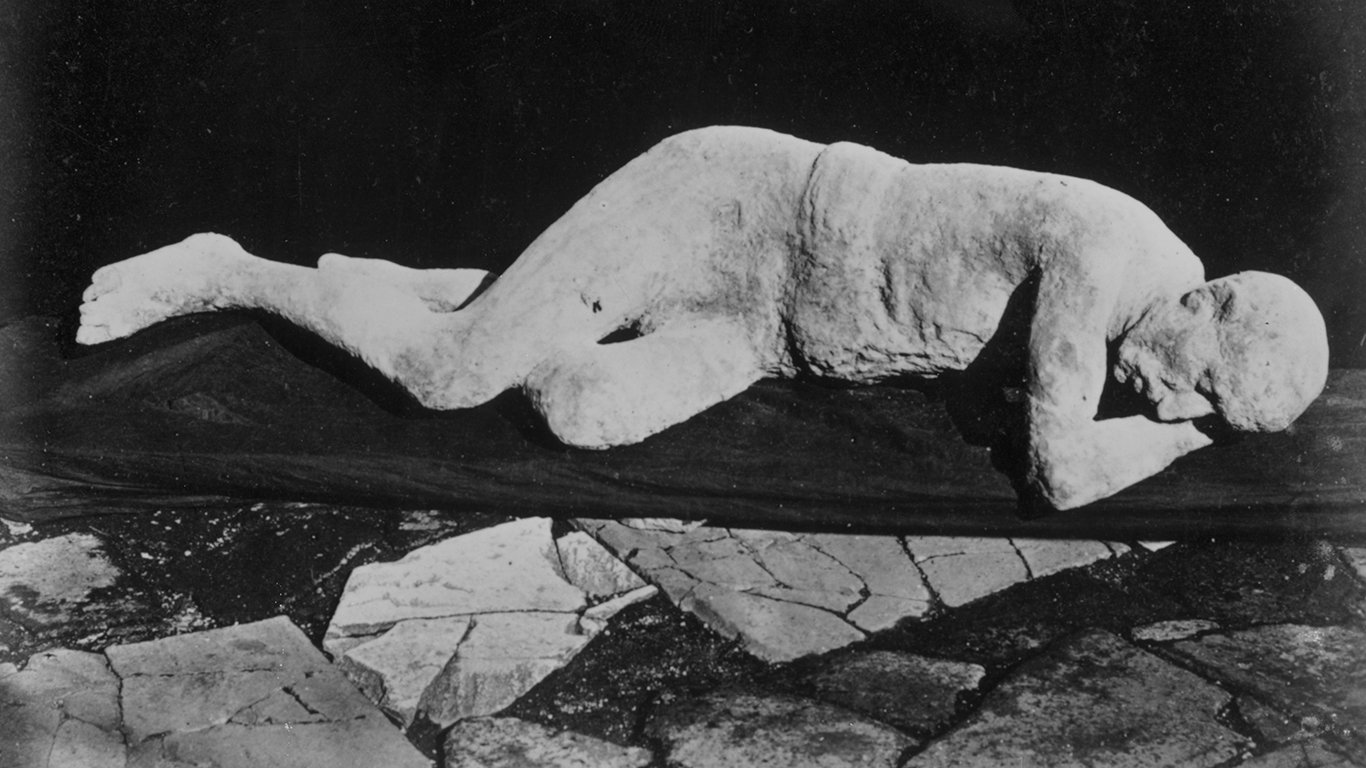
24. Volcano victims in Pompeii, Italy
> How old it is: 2,000 years
> When it was unearthed: 1748
> Where it was excavated: Pompeii, Italy
Pompeii, Italy, is often referred to as the city that was frozen in time. Nearly 2,000 years ago, one of the most well-known volcanic eruptions wiped out Pompeii as well as the neighboring cities of Stabiae, Herculaneum, and Oplonti. Nearby Mount Vesuvius erupted in A.D. 79, covering the cities in 13 to 20 feet of ash. The population died from the intense heat, gases, and ash. But Pompeii was rediscovered during the construction of the palace for the Bourbon royal family. Remarkably, the city was still intact, with preserved skeletons of those who perished. The ash and molten debris preserved the city and the bodies.
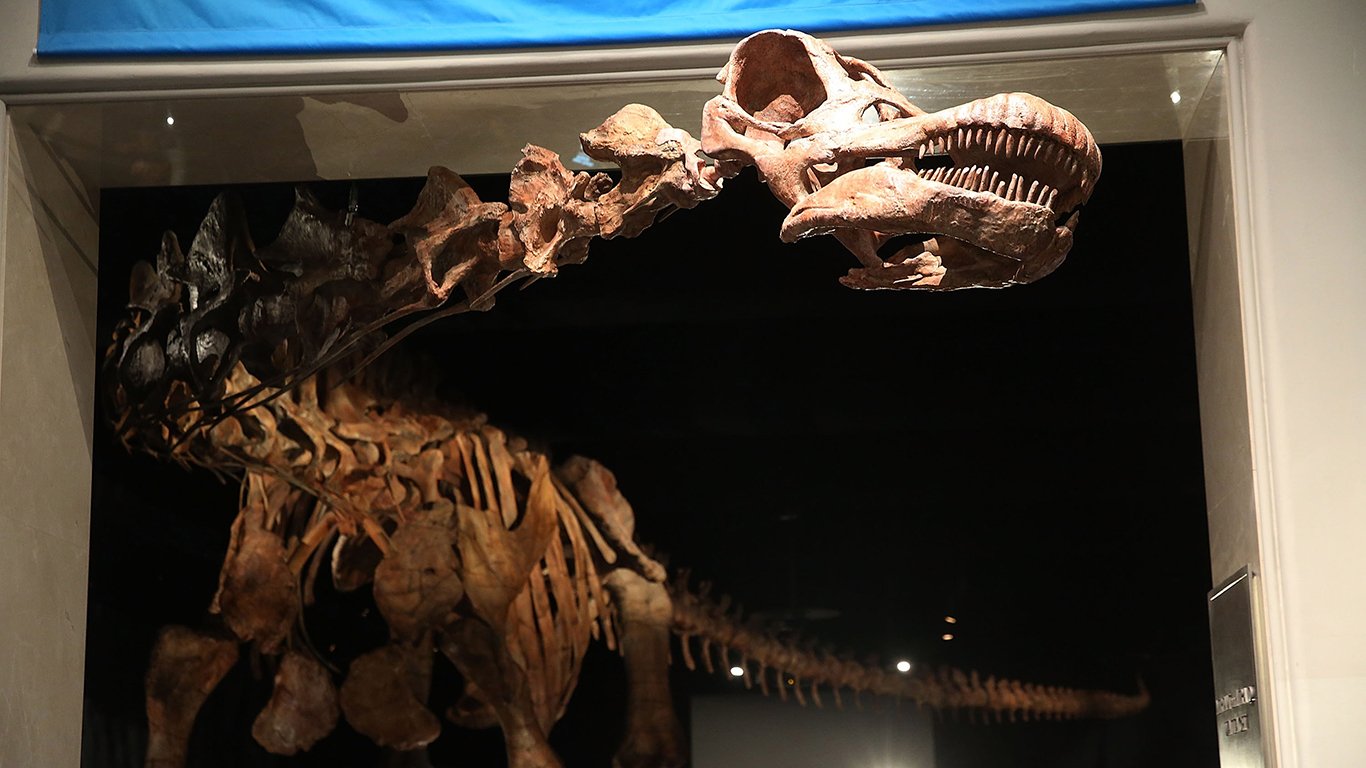
25. World’s largest dinosaur
> How old it is: 100 million years
> When it was unearthed: 2014
> Where it was excavated: Patagonia, Argentina
The world’s largest titanosaur was excavated in Patagonia, Argentina, in 2014. The herbivore is 122 feet-long. It was estimated to have weighed 70 tons and may be the largest dinosaur to ever roam the Earth. The femur bone alone weighs nearly 1,000 pounds and is 8 feet long. You can see all 84 bones of the titanosaur on the fourth floor of the American Museum of Natural History in New York City.
Detailed Findings & Methodology
Of course, other fossils are well-known because of the important, sometimes pivotal, information they provide scientists about ancient life. Like his name suggests, Otzi the Iceman had been frozen for over 5,000 years when he was discovered in 1991. Being frozen also helped preserve some of Otzi’s body tissue. This enabled scientists assess how old he was when he died and even the color of his eyes through DNA testing. The Iceman remains the best preserved human ever discovered from before the common era.
One well-known fossil discovery that’s not included on this list is the infamous Piltdown man. Charles Dawson caught the world by surprise with his fossil discovery in 1912. Dawson believed he found the “missing link” between ape and human. He calculated that the skull fragments of the human-like ancestor he unearthed were 500,000 years old. With new technologies, his calculations were found incorrect 37 years later — the fragments were only 50,000 years old, well past the point at which humans evolved into Homo sapiens.
To identify the most famous fossils ever discovered, 24/7 Wall St. reviewed various famous fossil discoveries. We chose 25 fossils that were excavated over a range of years, with the earliest one discovered in the late 17th century and the latest in 2016. We attempted to include fossils of humans, early human ancestors, dinosaurs, and other prehistoric life forms. For the age of the fossil and location and year unearthed, we reviewed articles from the American Museum of Natural History as well as scientific reports.
